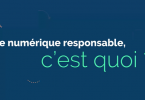Au-delà du titre accrocheur (“The Year of the MOOC“), l’article de Laura Pappano dans l’édition du Times du 2 novembre dernier, ainsi que son complément (“The Big Three : At A Glance“) ont le grand mérite d’établir des distinctions entre les “saveurs” des MOOC offerts par Coursera, Udacity et EdX, les principaux fournisseurs de MOOC aux États-Unis.
Coursera, le MOOC “social”
“Coursera casts itself as a “hub” — Dr. [Andrew] Ng’s [l’un des fondateurs de Coursera] word — for learning and networking. […]
Most offerings are adapted from existing courses: a Princeton Coursera course is a Princeton course. But the vibe is decidedly Facebook — build a profile, upload your photo — with tools for students to plan “meet-ups” with Courserians in about 1,400 cities worldwide. These gatherings may be bona fide study groups or social sessions. Membership may be many or sparse. [mes emphases]”
- 197 cours dans 18 domaines différents (informatique, mathématiques, gestion, sciences humaines, sciences sociales, médecine, ingénierie, éducation)
- Évaluation par cinq autres étudiants des réponses écrites qui ne peuvent être évaluées par une machine; on doit signer un code d’honneur contre le plagiat.
- Outre les certificats émis par Coursera, à partir de janvier Antioch University offrira des crédits pour certains cours approuvés.
Udacity, le MOOC “pratique”
“Udacity has stuck close to its math and computer science roots and emphasizes applied learning, like “How to Build a Blog” or “Building a Web Browser.” Job placement is part of the Udacity package. “The type of skills taught in computer science, even at elite universities, can be very theoretical,” Dr. Stavens explains.”
Udacity courses are designed and produced in-house or with companies like Google and Microsoft…”
- 18 cours, principalement en informatique, mathématiques, physique et gestion.
- En plus des quiz automatisés, on y évalue des problèmes et des devoirs de programmation. C’est donc le plus “appliqué” des trois.
- Contrairement aux deux autres, les cours n’ont pas de dates de début et de fin. On apprend à son rythme.
- Des examens dans des centres d’évaluation de Pearson sont possibles pour 89 $ US.
- Le Global Campus de Colorado State offre des crédits d’équivalence pour un cours de développement d’engin de recherche.
EdX, le MOOC “élitiste”
“If Udacity favors stylish hands-on instruction, edX aims to be elite, smart and rigorous; don’t expect a gloss of calculus if you need it but never took it. Some 120 institutions have been in touch; only Berkeley and the University of Texas system have been admitted to the club.
EdX’s M.I.T. roots show in its staff’s geeky passion for building and testing online tools. They collect your clicks. Feedback from the MOOC taught last spring by Dr. [Anant] Agarwal [responsable de l’initiative] revealed that participants would rather watch a hand writing an equation or sentence on paper than stare at the same paper with writing already on it.” [mes emphases]
- Le seul des trois qui n’est pas à but lucratif. (en lien avec MIT, Harvard, Berkeley et University of Texas)
- 8 cours en chimie, informatique, électronique, santé publique; prévisions de 20 à 30 cours au printemps 2013.
- Peu de possibilité d’interactions sociales.
- “ Some final exams are proctored, at Pearson testing centers for varying costs. To prevent copying, users get different, randomly generated numbers in their problem sets.”
- Deux certificats disponibles : un lié à un code d’honneur, l’autre suivant un examen surveillé.
Les articles renseignent aussi sur les MOOC en général avec certains points de vue troublants quant à l’aspect “grand public” des MOOC:
The evolving form knits together education, entertainment (think gaming) and social networking. Unlike its antecedent, open courseware — usually written materials or videotapes of lectures that make you feel as if you’re spying on a class from the back of the room — the MOOC is a full course made with you in mind. [mon emphase]
Ou encore…
Dr. [David] Stavens [un associé de Sebastian Thrun chez Udacity] sees a day when MOOCs will disrupt how faculty are attracted, trained and paid, with the most popular “compensated like a TV actor or a movie actor.” He adds that “students will want to learn from whoever is the best teacher.”
On y souligne bien les problèmes de l’évaluation par les pairs à grande échelle et de la très (trop?) grande diversité d’apprenants qui se côtoient dans un MOOC. On nous y apprend notamment que Coursera développe un algorithme permettant d’accorder moins de poids à la rétroaction de personnes qui notent mal les autres participants.
“Assignments that can’t be scored by an automated grader are pushing MOOC providers to get creative, especially in courses that involve writing and analysis. Coursera uses peer grading: submit an assignment and five people grade it; in turn, you grade five assignments.
But what if someone is a horrible grader?
Coursera is developing software that will flag those who assign very inaccurate grades and give their assessment less weight…
[…] The challenge is not just in grading. The diversity of MOOC takers — teenagers to retirees, and from across the globe — means classmates lack a common knowledge base and educational background. Out-of-their-league students, especially in highly technical courses, can drag down discussions.”
Sources :
Poppano, Laura, “The Year of the MOOC“, New York Times, 2 novembre 2012
“The Big Three, At A Glance“, New York Times, 2 novembre 2012






